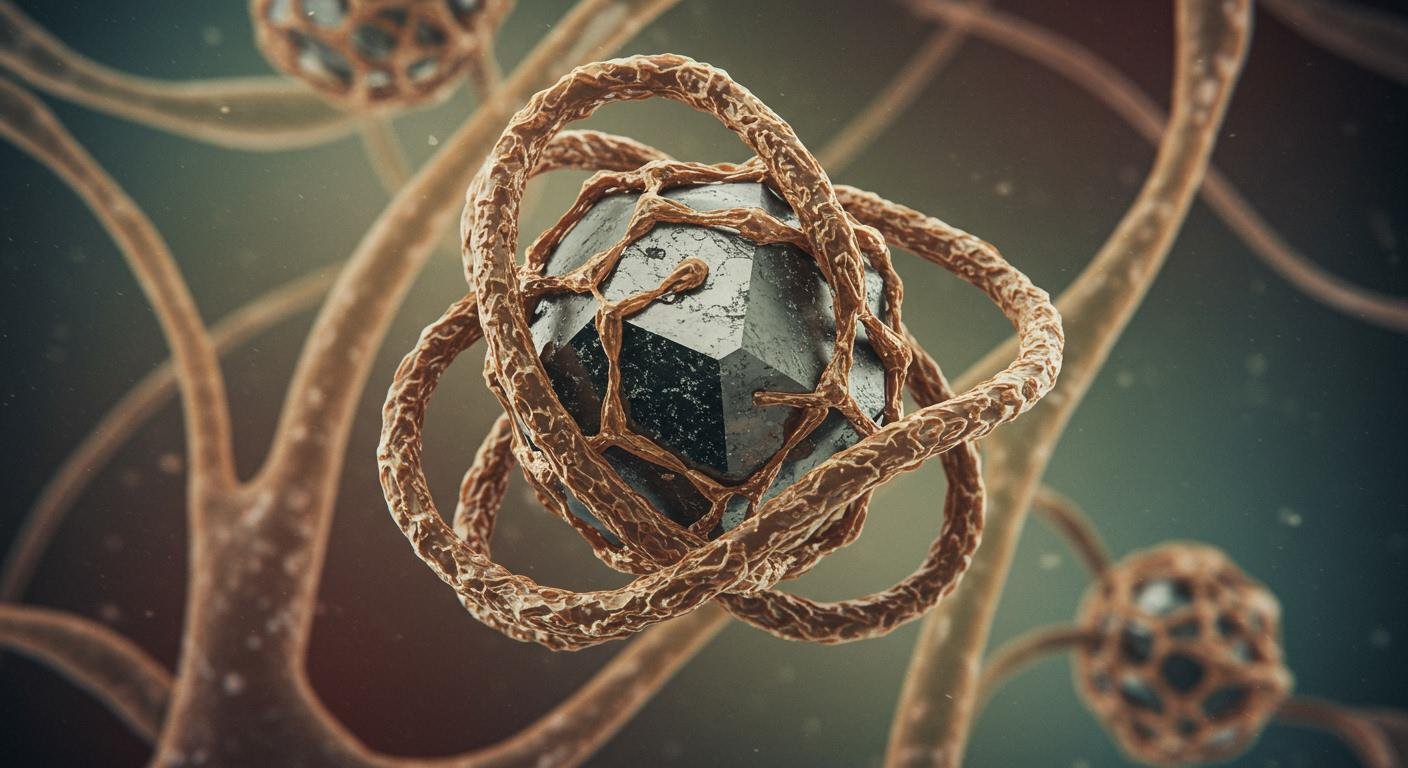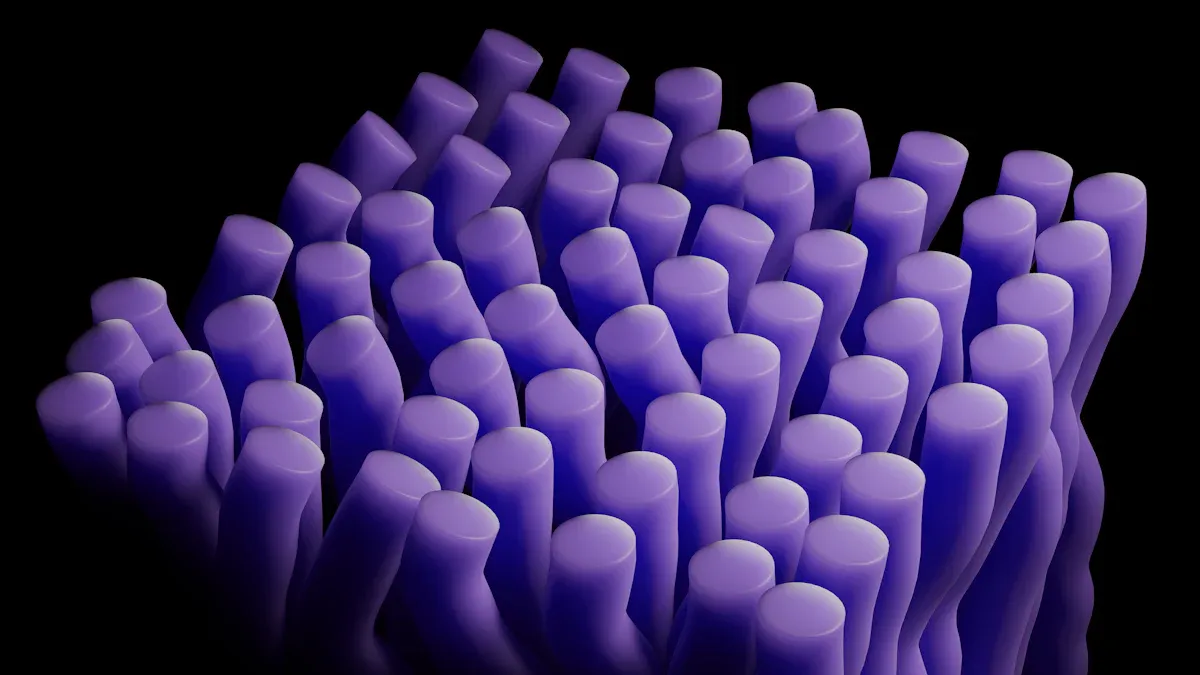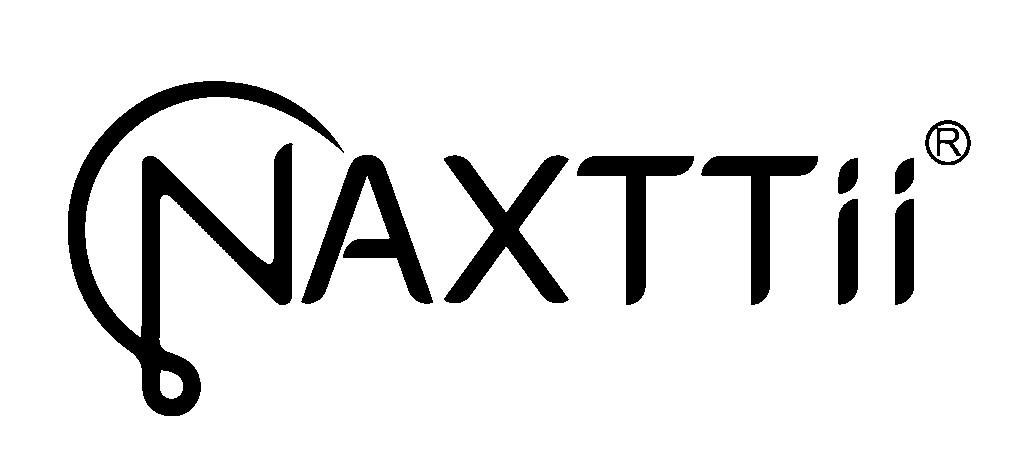The Journey of Mineral Chelation
Table of Contents

Mineral chelation is a scientific process. It binds a mineral to an amino acid. This creates a highly stable and absorbable form. The journey transforms a simple mineral into a superior supplement.
Think of the amino acid as a bodyguard 🛡️. It protects the mineral on its journey through the digestive system.
This protection is important. Studies show chelated zinc can have around 11% higher absorption than non-chelated forms. This improved delivery system helps the body get the nutrients it needs.
THE STARTING POINT: RAW MINERAL SALTS

Every journey has a beginning. The journey of mineral chelation starts with basic inorganic mineral salts. These are the raw materials that science aims to improve. Understanding their nature reveals why the chelation process is so necessary for effective supplementation.
Understanding Inorganic Minerals
Inorganic minerals are simple chemical compounds. Chemistry defines a salt as a compound made of positive ions (cations) and negative ions (anions). These ions bond together, creating an electrically neutral substance. Mineral salts, such as oxides and carbonates, are the most common forms found in basic supplements. They represent the mineral in its most elemental, unrefined state. While essential for health, this raw form presents significant challenges for the body.
The Limits of Bioavailability
Bioavailability is the amount of a nutrient your body can actually absorb and use. Inorganic minerals often have low bioavailability. The acidic environment of the stomach breaks these salts apart, releasing the mineral. This sounds helpful, but the free mineral now faces many obstacles.
Absorption Roadblocks 🚧 Free minerals must compete with other substances for absorption. They can easily bind with dietary compounds or fight with other minerals for the same entry point into the body.
| Obstacle | Description |
|---|---|
| Dietary Binders | Compounds like phytates and tannins in food can grab onto minerals, preventing their absorption. |
| Mineral Competition | Different minerals, like iron and copper, often use the same pathways, creating a traffic jam. |
These factors severely limit how much of the mineral actually reaches your cells.
Potential for Gut Irritation
The breakdown of inorganic salts can also cause physical discomfort. When a mineral salt dissociates in the stomach, the freed mineral ion becomes highly reactive. This reactive ion can directly contact the delicate mucosal wall of the stomach and intestines. This interaction often leads to irritation and unpleasant side effects. For example, many people experience digestive issues with common iron supplements.
Clinical studies show that standard iron supplementation is linked to constipation, nausea, and general stomach irritation. This happens because the un-chelated iron negatively impacts the gut environment.
THE SCIENCE OF MINERAL CHELATION
The journey from a simple salt to a superior nutrient involves precise science. The limitations of inorganic minerals are overcome through the process of mineral chelation. This transformation hinges on a unique partnership between the mineral and a special organic molecule.
The Role of the Amino Acid Ligand
In chemistry, a molecule that binds to a metal ion is called a ligand. For the effective chelation of minerals, amino acids are the perfect ligands. An amino acid’s chemical properties, such as its polarization charge and hydrophilic nature, allow it to form strong bonds with a mineral ion.
Glycine is one of the most effective amino acids for this job. It is small and binds easily to minerals.
Glycine creates a ‘protective shield’ around the mineral. This shield prevents the mineral from binding with dietary inhibitors like phytates in the digestive tract, ensuring it remains stable and ready for absorption.
This protection is the first step in creating a more bioavailable nutrient.
Forging a Stable Ring Structure
When an amino acid ligand binds to a mineral, it does not just attach at one point. It grabs the mineral in at least two places, forming a secure, closed loop. This powerful bond creates a highly stable molecular structure called a heterocyclic ring.
This ring is the chemical signature of a true amino acid chelate. The process of mineral chelation is not complete without it. The ring structure provides several key advantages:
- Stability: It keeps the mineral locked safely inside.
- Protection: It shields the mineral from the harsh, acidic environment of the stomach.
- Neutrality: It creates an electrically neutral molecule that does not irritate the gut wall.
How the Body Perceives Chelates
The body is incredibly smart. It has specific pathways for absorbing different nutrients. Because the mineral is now wrapped in an amino acid shell, the digestive system perceives it differently. It no longer sees a reactive inorganic mineral. Instead, it recognizes a familiar nutrient: an amino acid.
This allows the chelate to use dedicated amino acid transport systems, such as the PAT1 transporter, to enter the intestinal cells. It essentially gets an express pass, bypassing the traffic jams of standard mineral absorption.
| Form | How the Body Sees It | Absorption Pathway |
|---|---|---|
| Inorganic Mineral | A reactive ion | Competes with other minerals |
| Chelated Mineral | An amino acid | Uses efficient amino acid pathways |
This clever disguise ensures the mineral is delivered efficiently, maximizing its nutritional value without causing digestive upset.
DEFINING METAL AMINO ACID CHELATES
The journey of mineral chelation creates a superior nutrient, but not all products that use the word “chelate” are created equal. The market contains a wide range of mineral compounds, from true chelates to simple complexes. Understanding the precise definitions of these terms is crucial for identifying a truly effective supplement. The science lies in the specific structure and bond that holds the mineral.
The Gold Standard of Absorption
True metal amino acid chelates represent the gold standard in mineral supplementation. Their superiority comes from a specific and stable chemical structure. The Association of American Feed Control Officials (AAFCO) provides a clear definition. It describes a mineral chelate as the product of a reaction between a metal ion and amino acids. This reaction creates strong coordinate covalent bonds. The ideal ratio is one mole of metal to two moles of amino acids, forming a stable, nutritionally functional molecule.
This structure leads to a completely different absorption mechanism. New iron compounds like iron chelates offer much higher bioavailability than traditional ferrous salts.
The body absorbs most free iron ions passively. In contrast, it uses specific active transporters in the intestinal wall to absorb metal amino acid chelates. This active uptake is far more efficient.
Studies confirm this advantage. Research on zinc bisglycinate found it was 43.4% more bioavailable than zinc gluconate. Other clinical trials showed that zinc glycinate was better absorbed than zinc picolinate and zinc oxide. This active and protected pathway is what makes true metal amino acid chelates the most effective form for delivering minerals to the body.
Mineral Complexes Explained
The term “mineral complex” is a broad category. A chelate is a specific type of complex, but many metal amino acid complexes are not true chelates. The key difference is the strength and nature of the bond. In many simple metal amino acid complexes, the mineral is attached to an amino acid with only a single, weaker bond. This structure does not form the protective ring that defines a true chelate.
This weaker bond offers little protection during digestion. The acidic environment of the stomach can easily break it, releasing the mineral as a reactive ion. Once freed, the mineral behaves just like an inorganic salt, facing the same absorption roadblocks and potential for gut irritation.
| Feature | Mineral Complex | True Chelate |
|---|---|---|
| Bonding | A single, weaker bond from the amino acid. | Multiple, strong bonds forming a stable ring. |
| Structure | The mineral is attached at only one point. | The mineral is securely held inside a ring. |
| Stability | The structure is often destroyed in the stomach. | The structure remains intact through digestion. |
| Behavior | The mineral can be released and act as a reactive ion. | The mineral stays protected for optimal absorption. |
Many common supplements are metal amino acid complexes, not true chelates. Examples include:
- Gluconates (e.g., zinc gluconate)
- Oxides (e.g., magnesium oxide)
- Sulfates (e.g., manganese sulfate)
These forms lack the stable, double-bonded ring structure needed for maximum absorption.
Understanding Metal Proteinates
Another category found in supplements is the metal proteinate. A metal proteinate results from chelating a mineral with amino acids and/or partially hydrolyzed proteins. These proteins are broken down into a mixture of single amino acids and larger protein fragments called peptides. The resulting product is a type of metal amino acid complexes where the mineral binds to this varied mixture.
The source of these proteins is often hydrolyzed soy protein or other plant-based materials. While the intention is to create a stable product, the use of a protein mixture introduces significant variability. The peptides in the mix come in many different sizes and shapes. This inconsistency affects both stability and absorption.
This variability means a metal proteinate is less defined and predictable than a true amino acid chelate. The key differences include:
- Inconsistent Structure: A metal proteinate binds minerals to a random mix of peptides and amino acids.
- Variable Stability: The strength of the bonds can vary greatly within the mixture.
- Unpredictable Absorption: The body may not absorb all the different peptide-mineral combinations efficiently.
In contrast, a true amino acid chelate uses a single, specific amino acid like glycine. This creates a uniform, stable, and highly predictable molecule that the body can easily absorb. This makes it a more reliable choice for supplementation than the broader category of metal amino acid complexes.
THE FINAL STEP: ABSORPTION IN THE BODY

The journey’s final and most critical stage is absorption. After surviving the stomach’s harsh environment, the chelated mineral must enter the bloodstream to deliver its benefits. This is where the true advantage of chelation becomes clear. The protective amino acid shield guides the mineral past digestive roadblocks and into the body’s cells.
Bypassing Digestive Interference
The digestive tract contains many substances that can block mineral absorption. These are often called anti-nutrients.
Compounds like phytates and oxalates, found in many plant-based foods, are strong mineral binders. They can grab onto free mineral ions, forming complexes that the body cannot absorb. This means the mineral passes through the system without providing any nutritional value.
Chelation technology solves this problem. The stable ring structure of a true amino acid chelate acts as a protective fortress. It shields the mineral from these dietary inhibitors. This protection ensures the mineral remains soluble and ready for uptake by the intestinal cells.
Using Amino acid Pathways
The body absorbs chelated minerals through an active transport process. Because the mineral is wrapped in amino acids, the body recognizes it as a peptide. This allows it to use dedicated amino acid transporters in the intestinal wall. It is like having a VIP pass to enter the body.
The absorption process follows several key steps:
- The chelate resists stomach acid and enters the intestine intact.
- Intestinal cells transport the chelate using special pathways like the PepT1 transporter.
- Once inside the cell, the mineral is released and transported into the bloodstream.
This active transport is far more efficient than the passive diffusion used for inorganic minerals. It avoids the “traffic jams” caused by mineral competition, leading to optimal mineral absorption.
Delivering Maximum Nutritional Value
Superior absorption directly translates to greater health benefits. When more of a mineral reaches the body’s cells, it can perform its essential functions more effectively. This improved delivery system leads to better health outcomes.
🔬 Science in Action: Studies show that chelated minerals deliver real results. For example, a 2023 clinical trial found that a nanochelating-based medicine helped improve IL-6 levels, a key health biomarker, in hospital patients.
Animal studies also confirm these benefits. Research on organic acid-based chelates showed they improved bone composition, immune responses, and blood parameters in broilers. These findings demonstrate that the journey of chelation ends with a nutrient that is not only better absorbed but also delivers a more powerful nutritional impact.
The journey of mineral chelation transforms a reactive mineral salt into a superior nutrient. Science creates a stable amino acid chelate. This protected form bypasses digestive issues and uses special pathways for maximum absorption. True mineral chelation is a precise science, not just a marketing term.
Understanding this process empowers consumers. It allows them to choose supplements that deliver real nutritional value.
FAQ
Why is a chelated mineral better?
Chelated minerals offer superior absorption. An amino acid shield protects the mineral from digestive interference. The body then uses efficient amino acid pathways for uptake. This process delivers more of the nutrient to the cells.
Are all “chelated” supplements the same?
No. True amino acid chelates have a stable ring structure for maximum absorption. Other forms, like mineral complexes or proteinates, often have weaker bonds. These weaker bonds can break easily during digestion, reducing effectiveness.
Do chelated minerals cause stomach upset?
Chelated minerals are gentle on the digestive system. The chelation process neutralizes the mineral’s charge. This prevents the irritation often associated with inorganic mineral salts, making them easier for the body to tolerate.
How can a person identify a true chelate?
Consumers can check the supplement facts panel. True chelates often use specific names that identify the amino acid.
Tip 💡: Look for terms like “Bisglycinate Chelate.” This name indicates the mineral is bonded to two glycine amino acids, signaling a high-quality, stable form.

Poseidon
Master of Nutritional Epidemiology, University of Copenhagen, Herbal Functional Nutrition Researcher
Focus: The scientific application of natural active ingredients such as Tongo Ali, Horny Goat Weed, and Maca to sexual health and metabolic regulation.
Core Focus:
Men: Use a combination of Tongo Ali (an energizing factor) + Maca (an energy reserve) to improve low energy and fluctuating libido.
Women: Use a combination of Horny Goat Weed (a gentle regulator) + Maca (a nutritional synergist) to alleviate low libido and hormonal imbalances.
Stressed/Middle-Aged Adults: This triple-ingredient synergy supports metabolism, physical strength, and intimacy.
Product Concept:
Based on traditional applications and modern research (e.g., Tongo Ali promotes testosterone-enhancing enzyme activity, and icariin provides gentle regulation), we preserve core active ingredients and eschew conceptual packaging—using natural ingredients to address specific needs.
Simply put: I'm a nutritionist who understands "herbal actives." I use scientifically proven ingredients like Tongo Ali, Epimedium, and Maca to help you make "sexual health" and "nutritional support" a daily routine.
